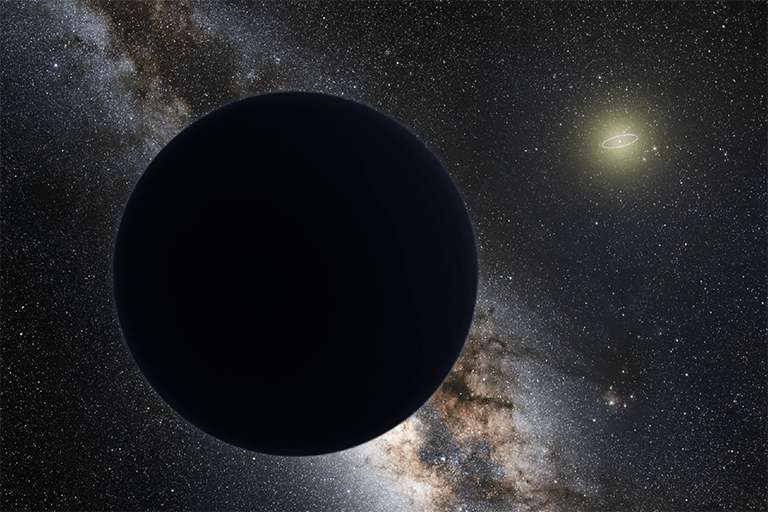Planet X: everything indicates that the Solar System would have one more planet

Notre Solar system. The astronomers have been studying it for a long time now. But they still haven’t unlocked all of its secrets. They always wondered how the giant planets what are Jupiter, Saturn, Uranus et Neptune ended up in the orbits we know them to be today. A question to which a team of the Michigan State University (United States) now provides an answer. Who could even confirm the existence of a fifth giant — the famous planet X –, the ninth planet in our solar systeme, hidden some 80 billion kilometers from our star.

Is a ninth planet - here in an artist's view - hiding at the edge of our solar system? The model developed by researchers at Michigan State University (USA) does not exclude it. :copyright: ESO, Tom Ruen, nagualdesign
As a starting point for their work: a questioning concerning the so-called Nice model – because it was developed at the Observatory of the Côte d’Azur. This one wants the giant planets to have occupied a position « compact » before migrating to those they occupy today. All under the effect of an instability that appeared long after the disk of gaz protoplanetary dissipated. The researchers of the Michigan State University, they tried to imagine another scenario. That of planets moving by “rebound effect” even as the disc evaporates.

“All planetary systems form in a disc of gas and dust. It is a natural byproduct of star formationexplains Seth Jacobson, astronomer, in a communiqué. But when a star ignites and begins to burn its nuclear fuel, it emits light and heats this disc that it ends up blowing, from the inside to the outside of the system”.
an instability “very universal”
What the astronomers of the Michigan State University have discovered is that this process has created a veritable hole in the cloud of gas and dust, residue of the formation of our Sun. A hole that has grown, gradually catching up with the primitive orbits of the giant planets. Thus giving rise to the instability evoked by the nice model. But an instability that the simulations bring in here much earlier. “Less than 10 million years after the birth of the Solar System”, say the researchers. And much faster too. With a mixture of material between the inner solar system and the outer solar system.
Scientists Found New Evidence For The Existence Of Planet X!
“This process has stirred our region of the Solar System. Our Earth grew from there”, says Seth Jacobson. The geochemistry of our planet also seems willing to confirm the mixture evoked by the astronomers of the Michigan State University while our Planet was being formed. And the researchers now consider that this scenario could also apply to other planetary systems. For the way in which the instability at the origin of the current structure of our Solar System seems to have finally appeared turns out “more universal” than that envisaged by the Nice model.
A model compatible with the existence of a ninth planet
The description proposed by the researchers of the Michigan State University also sheds new light on the issue of planet X, this mysterious — and still hypothetical — ninth planet that would complete the family portrait of our Solar System. Remember that according to the Nice model, there should have been a fifth giant planet. But that this one would have been ejected outside our Solar System during its period of instability, thus helping the others gas giants — those we know well — to settle permanently in their respective orbits. The trouble is that some astronomers think that a giant planet is still hiding on the outskirts of our solar system. But they are still struggling to find proof.
The new model presented here does not provide a definitive answer. The researchers simply note that their simulations render similar results when starting from a system made up of four or five giant planets. A system made up from the start of four gas giants ends up with orbits that match very well those of Jupiter, Saturn, Uranus and Neptune. But a system initially composed of five gas giants ultimately emerges as the most likely to end up with four giant planets. Let’s hope that the Vera Rubin Observatory — which is due to come into operation at the end of next year — will finally give us the answer!
What If Planet X Was Real?
https://www.arover.net/2022/04/28/planet-x-everything-indicates-that-the-solar-system-would-have-one-more-planet/

